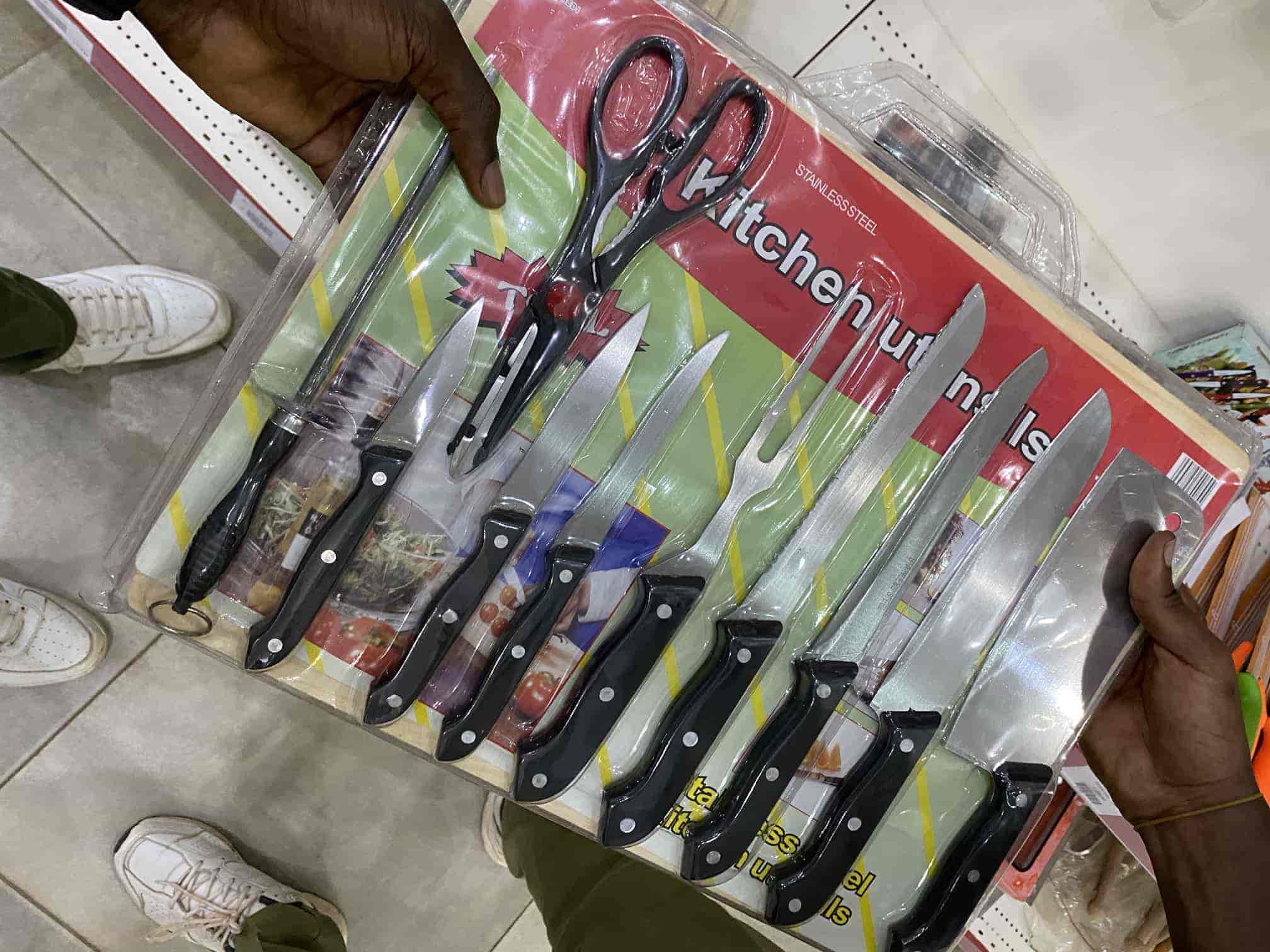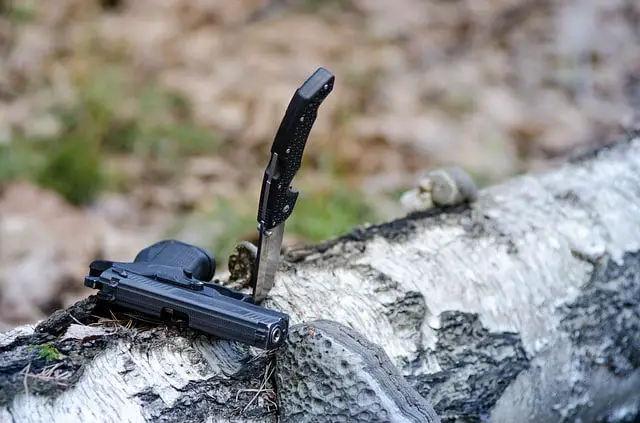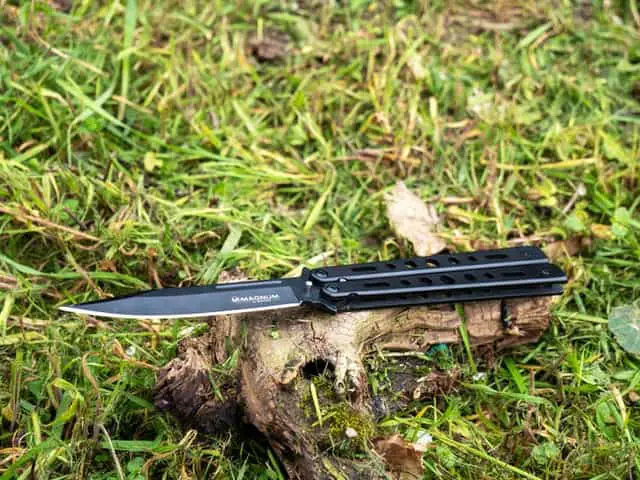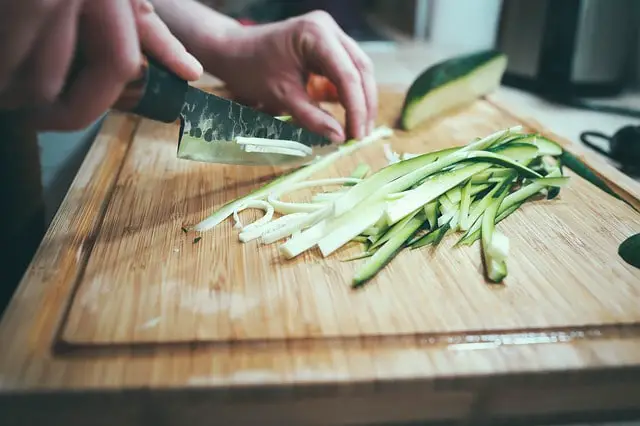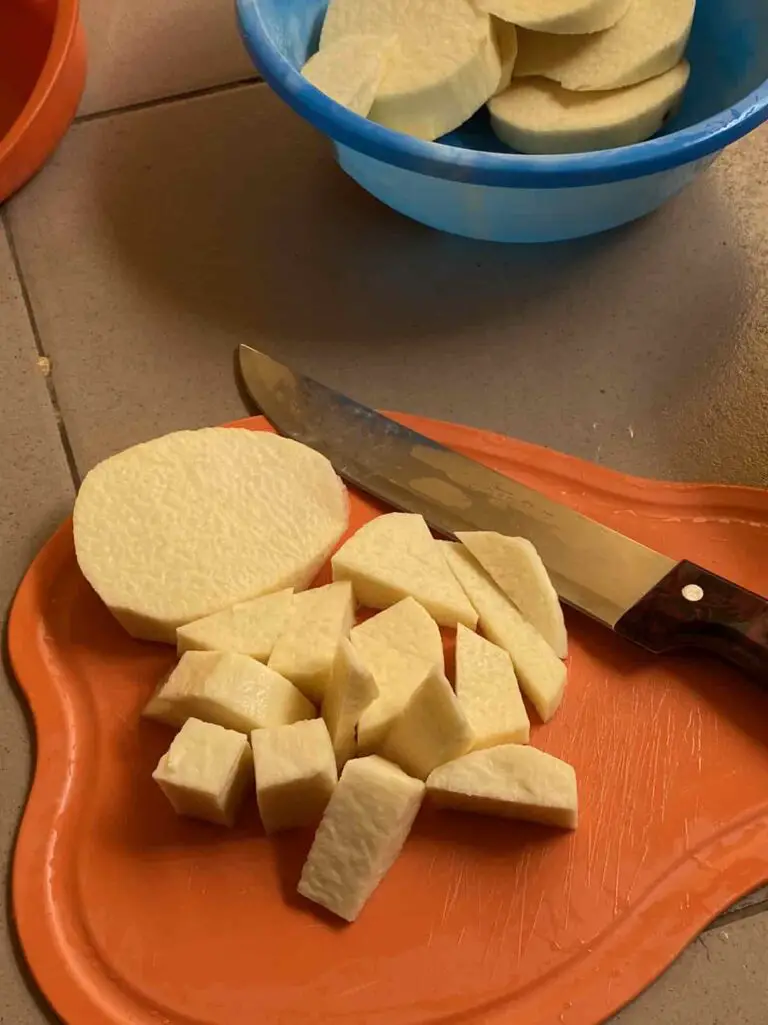What kind of knife is that?
This might not be a question that you ask yourself all of the time but the time will come when you need to know the name, family history, social security number (I’m kidding), and every other thing about a knife. This is where the knife identification chart comes into the mix.
The good news is, these charts are not difficult to read and use at all. The not-so-good news is, there are a lot of knives out there.
I had fun researching all the various knives and bringing up this chart, though, so I know you will too.
Table of Contents
Knife Blade Identification Chart
I grew up around a lot of knives, all thanks to my mum.
No, she is not some knife-throwing instructor with the CIA or something, although that would have been cool. She just loves to cook a lot – and she did teach her boys how to make a decent meal too.
However, even all the time I spent around knives did not prepare me for all these different blades I saw when I went shopping.
Here are the different knives based on their type of blades:

- Normal straight – most of you know this kind. It is arguable the most common type of knife that you would find in any home today. Chances are these are the only kinds of knives that most people would need at home. For reference, I had only this knife (and a smaller one) when I was just a student – and they served me just fine throughout.
- Trailing point – the trailing point knife is specially designed to aid better slicing, filleting, and skinning. It is designed such that the spine elevates upwards so much that the sharp point is at a higher angle than the handle
- Clip point – the slight curvature at the tip of the clip point knife makes it a great tool for thrusting and seamless insertions. It is a fine addition to your collection if you deal with game or prepare your meat yourself
- Spearpoint – the spear point knife is almost the same as the clip point, only that it has the curvature on both sides of the tip instead of just one side. This allows for a better thrusting motion, which is also why most people prefer a spear point knife to the clip point for such operations.
- Talon – this blade looks like the trailing point, only curved downwards this time. The talon is a fine EDC (everyday carry) knife that comes in handy in survival and outdoor situations. The blade is also shaped such that allows maximum user safety and maximum damage to what it is used upon.
- Drop point – if the clip point and spear point knife had a child, it would be this one. Most users are hunters and butchers who love the fact that they can perform a wide variety of operations (cutting, skinning, carving, etc) with this baby.
- Needlepoint – I admit that this one looks a little strange and even I am yet to come across one. However, I have heard that the needlepoint knife is what you should have when you are looking to pierce and penetrate stuff. That makes it one of the best fighting knives, and a great carry when you are spending time outdoors.
- Sheepfoot blade – the sheepfoot blade looks like it’s not sharp enough at this angle. Don’t let that fool you, though. The top functionality of this blade is to achieve precise cuts without creating points and piercings. That explains why it is the darling of many chefs and a staple kitchen blade.
- Dagger – there is little to separate the dagger from the spear point knife. They look similar in style and shape but one (the spear point) has a less smooth blend to the tip. They can be used interchangeably too.
- Wharncliffe blade – the Wharncliffe blade could be called a cousin of the sheepfoot blade, only with more curvature. It also allows for precise and smoother cutting operations without an accidental puncture or piercing happening.
- American Tanto – the Americans had to get their own in there, and they did it in style. With the American Tanto, you don’t have to look anywhere else to get a fine stabbing knife. The tanto works great for hard materials.
- Japanese Tanto – your opinions might differ, but this is a better knife than the American tanto. Since stabbing is what they are good for, I prefer to have more length (as provided here) to get a better grip on tearing down from the stab, when needed.
- Spey Point – the name says it all. Farmers who have livestock appreciate this knife the best as it allows them to mark their animals easily. Now, any other knife could do this job too – not just as well as the Spey point.
- Dao blade – does the name sound Asian to you? That’s cos this one is of Chinese origin. The Dao blade could have been a sword if the second part were sharpened and it is made longer. With this build, it is ideal for slashing and chopping.
Pocket Knife Identification Chart
Pocket knives are cool. In fact, very cool.
I might not know how to do all that flick movement with a pocket knife for fear of hurting myself, but I do love their design and build.
Now, you might have thought that there was only one kind of pocket knife. That could not be farther from the truth.
Now that you know the different kinds of knife blades, you can understand your pocket knives better too.
Check out the diverse options of these knives below:

- Stockman – the Stockman pocket knife is a highly versatile pick with three blades: the spey, clip point, and sheep foot blade. Between these three blades, there are a lot of things that you can get done. A lot!
- Peanut – this pocket knife keeps both blades on only one end. The knife earns its name from the small size which makes it easy to conceal and carry. Despite being small, a combination of a clip point and pen knife blade makes this pocket knife just as useful as its peers.
- Copperhead – the copperhead makes use of both ends of the pocket knife frame, hosting a small clip point at one end. The edges of the knife are noticeably slightly elevated to prevent accidental cuts from the extending blade tips
- Teardrop – this pocket knife gets its name from the shape of the handle, not the knife itself. You can get them in single-blade or double-blade options, and a variety of different blade types. I think the spear blade works best for this design, anyway.
- Pruner – the name says it all here. The pruner pocket knife is a great handy tool for those invested in some gardening, but that is not all. It is also cool for chopping vegetables (like lettuce, cucumber, kale, etc). I don’t see it as an everyday carry, though, maybe because I don’t own a plant.
- Barlow – Barlow pocket knives follow a traditional design element that also looks like the teardrop handle. They can choose to have either one or two blades at one end only, and are one of the most functional outdoors pocket knives you can carry.
- Congress – we have seen one, two, and three blades. How about four? I’ve seen some 2-blade designs for this bad boy, but they are not as functional as the four-blade options. The good news is that you can have different blade configurations, depending on where you buy yours from.
- Elephant toe – that first blade is so massive; this guy deserves the name it gets. The large knife looks like something you would use for more stabbing operations than cutting. But then, the latter is what the smaller blade at the other end is for.
- Folding Hunter – most folding hunter knives will either have a clip point or drop point blade. No matter which it is, they are slightly too big for EDC so you might want to keep them till you need them. As the name implies, you will need them outdoors, especially if hunting game.
- Whittler – this doesn’t even need me to say anything. A perfect pocket knife for whittling? Say no more: just pick this guy. Great for doing some carving too.
- Trapper – the trapper knife, with its two-blade configuration, is ideal for those who catch small games. The spey knife and clip point blade combination allow for processing rabbits, geese, and ducks.
- Canoe – I do not know why this guy got this name. What I do know, though, is that it carries a larger spear blade at one end and a smaller pen knife blade at the other end. Surprisingly, this is a great fishing knife. Maybe that’s where the name came from.
- Muskrat – an entire pocket knife dedicated to muskrats. That must be something. As a muskrat is also a small game, it could be argued that the muskrat pocket knife is also a great trapper pocket knife, just more specialized.
- Sodbuster – the sodbuster is a specialized pocket knife best used for skinning. It could handle other everyday demands quite alright too, but you would get the best value for money out of your purchase when you have some skinning needs too.
- Jack – the Jack pocket knife comes last but it is one of my personal favorites. The design element is nice, and the knife is highly functional with both its blades too. You cannot go wrong here if you are just getting a pocket knife, or adding another one to your collection.
Kitchen Knife Identification Chart
I told you I grew up around a lot of knives. Well, let me put that in another way:
I grew up around a lot of kitchen knives.
Even at that, though, I would not have been able to identify them all by name if not for charts like these:

Now, you don’t have to cram the shapes and sizes of these knives in your head. Once you know what they are best for, you know what to get also.
PS Not everyone will need all kinds of kitchen knives. Like I said earlier, too, a handful of knives can be used interchangeably so you don’t have to splash out too much on knives
- Chef’s Knife – chef’s knives are like the jack of all trades in all of the knife kingdom. They are light enough for ease of operation, but also weighty enough to allow you to feel their premium appeal. Most chef knives can handle a task range from cutting through a whole chicken to dicing veggies.
- Utility Knife – this comes after the chef’s knife for a reason. Although lighter and smaller, it is more precise when dealing with smaller/ less stubborn food items like vegetables and fruits.
- Paring knife – as seen in the chart, paring knives can come in different sizes. No matter the size, they are great for delivering precise cuts, separating fruit/ vegetable skins from the flesh, and other surgical tasks in the kitchen. Here’s a bigger guide to paring knives and how to use them.
- Santoku knife – this name of this Japanese knife translates to three “virtues/ uses,” telling us how it is best used. You need a Santoku knife for chopping, dicing, and mincing operations. See all about santoku knives here.
- Boning knife – The name says it all. This is the knife you use to separate animal meat from the bones. There are flexible (best for fish and poultry) and stiff (best for beef and pork) boning knives. Know what the knife will be used for before buying, or just get both for different operations.
- Bread Knife – the bread knife is great for cutting bread and some people find joy in using it for their tomatoes. Left to me, I would recommend that you just get a chef or utility knife and double them as a bread knife. If you like the serrated cuts that you get from a bread knife, though, buy one.
- Cleaver knife – don’t want to debone your meat first? Get a cleaver knife. They are strong and powerful enough to slice through meat and bone fast enough. Some of the best cleaver knives will make light work of your meat processing, making a better case for why you should get them.
- Steak Knife – my mother would say that the steak knife is a bread knife with class. The serrated edges sure make it look like a bread knife, and it is currently the only sharp knife welcome at a modern dining table. As the name implies, the knife is best used for cutting steak and other forms of meat where necessary.
What’s your Knife?
Together, we have gone through a list of the different blades you could have on a knife, the most popular pocket knife types out there, and the various kitchen knives you might want to consider during your next shopping run.
You could also easily use the knife identification charts above to understand what knives you have at hand, what every knife in a set does, and whether or not you need to add specific knives to your collection.
No matter which it is, you are now a better knife enthusiast and/ user, depending on which side of the fence you fall on.

